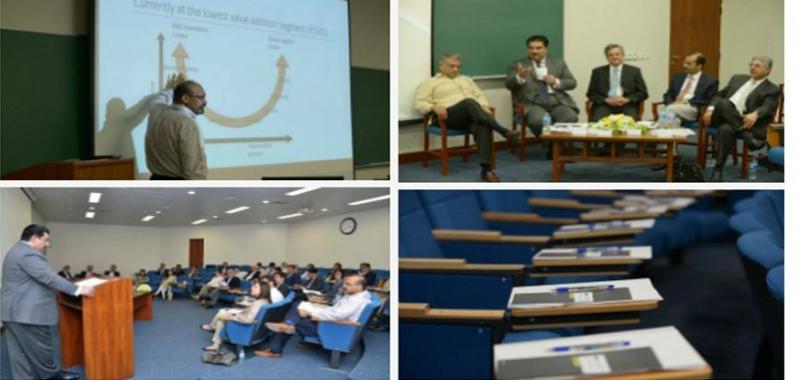
LUMS Economics Professors launched the Regional Competitiveness of the Auto Sector in Pakistan report at LUMS on March 28, 2016. The event, organised in collaboration with the World Bank and Institute of Development and Economic Alternatives (IDEAS), presented the report described below. The full report can be downloaded here.
The auto industry of Pakistan is at a crossroads and policy makers now have two options for catalyzing change in the status quo. They could take the direction of increasing consumer choice by opening imports of cars, thereby letting the domestic auto industry atrophy. Alternatively, they could take the direction of increasing commitment to an auto sector in Pakistan by providing not just continued tariff protection, but adding to it the full complement of supporting policies. The existing system of implementing just the tariff protection part of the AIDP package has proven to be counter-productive, generating rents and discouraging investment and competition at the cost of consumers. Consequently, the status quo of a highly concentrated industry, low market size, low exports and limited consumer choice has prevailed in the automobile market. Even after decades of tariff protection, the Pakistani car industry cannot sustain itself without protection.
At the same time, despite frequent and ad-hoc changes to the policy environment and a poor business climate, the auto sector has managed to create employment and engineering capacity throughout its value chain, and has also been able to tap export markets for motorcycles, tractors and auto parts. Certainly the possibility of the auto industry living up to its' full promise of an engine for national economic growth still exists. The impediments faced by the industry are not insurmountable. No auto industry in the world has been able to achieve competitiveness without a well-articulated vision and a strong set of consistent, long-term government policies to foster it, and Pakistan’s example is no different. This report discusses the competitiveness of the industry, the impediments faced and the policies required to shift the trajectory of the auto industry from the infant stage to maturity, such that it delivers competitive products for domestic consumers and high quality jobs in production, fits into global value chains, and fuels export growth.


